City experts, residents and determined changemakers join a roundtable discussion about our evolving city core in Downtown Pittsburgh.
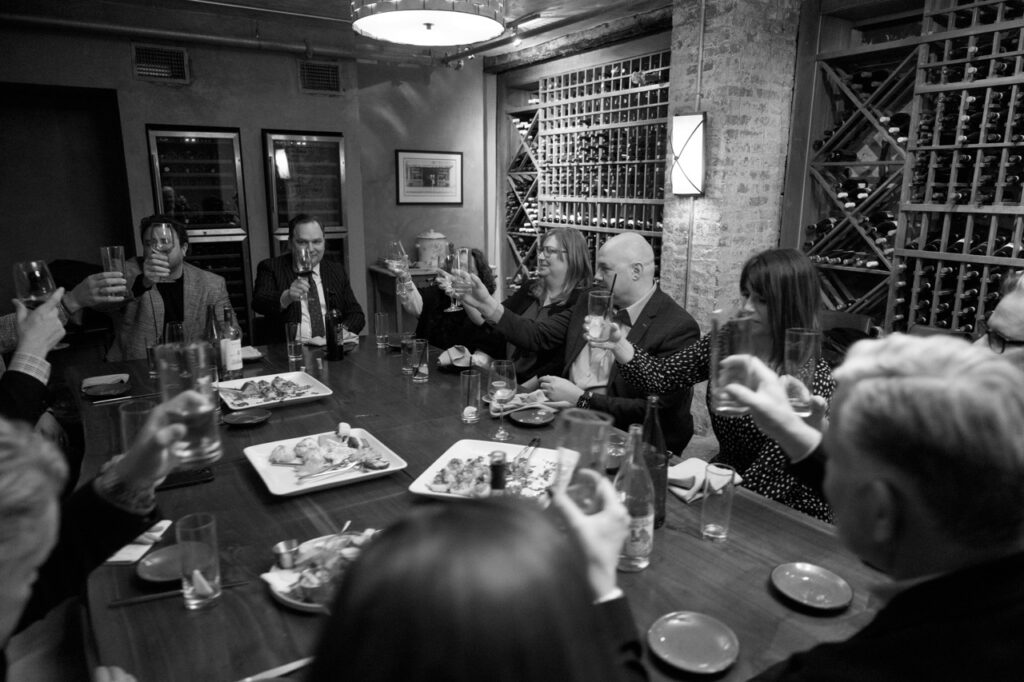
A “table of optimists” discusses Pittsburgh’s Downtown.
A Discussion of Downtown Pittsburgh From City Executives and Bussinesspeople
On a chilly January evening, a group of passionate Pittsburghers gathered in the enchanting subterranean wine cellar of family-run Vallozzi’s restaurant. Over platters of charcuterie, bowls of fresh pasta, and amazing main courses, the group dove into the topic at hand — Downtown Pittsburgh: What’s working, what’s not and what enhancements are soon to come.
Native Pittsburgher and TABLE Editor-in-Chief Keith Recker initiated the discussion by sharing how he boomeranged back after 31 years away, deeming this a prime place for raising children. He encouraged roundtable participants to discuss differing perspectives and honest positions about the many reasons to come downtown today — with even more arriving in the months and years ahead. Publisher Justin Matase echoed the need to change the conversation around our city center, reminding residents how we all can play a part in helping this “awesome downtown” thrive.
Everyone agreed that “dahntahn’s” parameters are ever evolving, yet some things stay consistent. Current development projects (like the new airport terminal, which will have $2.5 billion in economic impact and generate 14,300 total jobs) and upcoming events like the 2026 NFL Draft will bring even more folks to the city’s core. This is no doubt accelerating the pace at which transformation is taking place. Then of course, there was Governor Shapiro’s announcement last fall of a 10-year $600-million-dollar plan to rejuvenate downtown Pittsburgh.
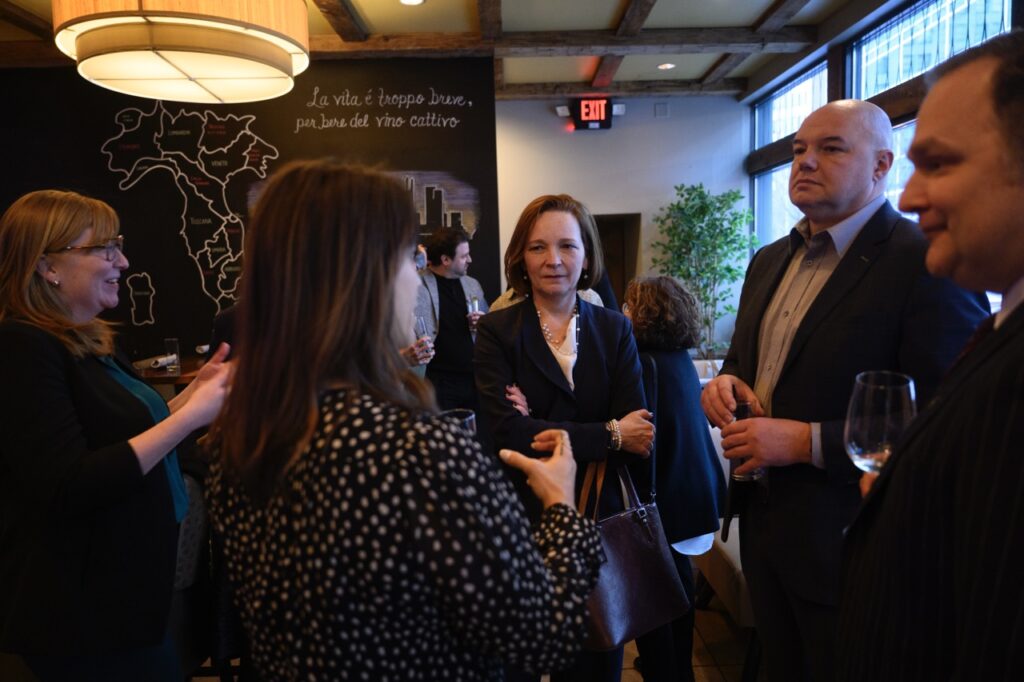
Lauren Connelly, Sara Innamorato, Melia Tourangeau, Chris Ragland, and Shawn St.-Pierre deep in pre-dinner conversation at Vallozzi’s.
What’s Already Working for Downtown Pittsburgh
Recurring themes throughout the evening ranged from downtown’s stunning architecture and alluring amenities to thriving culinary and cultural offerings — including popular festivals like Picklesburgh and newer ones like Oktoberfest. It was noted that huge events with record-number attendance have taken place without incident, like when 300,000 people visited last winter’s holiday market.
Herky Pollock, a local restaurant owner (Ritual House, among others), real estate developer and staunch Pittsburgh champion, thinks “there’s so much working right now, and there’s so much progress since the pandemic ended.” (“There’s no greater cheerleader for downtown,” piped in County Executive Sara Innamorato.)
“I view our downtown as a microcosm of our region, in that Pittsburgh is hugely resilient,” Pollock continued. “We built the steel mills and the aluminum factories and all the blue collar that built America, and most of that industry has gone by the wayside.” This happened to the six downtown department stores he points out, too. “Yet we’ve reinvented ourselves with white collar business and hi-tech, and we’re reinventing ourselves once again in the downtown.”
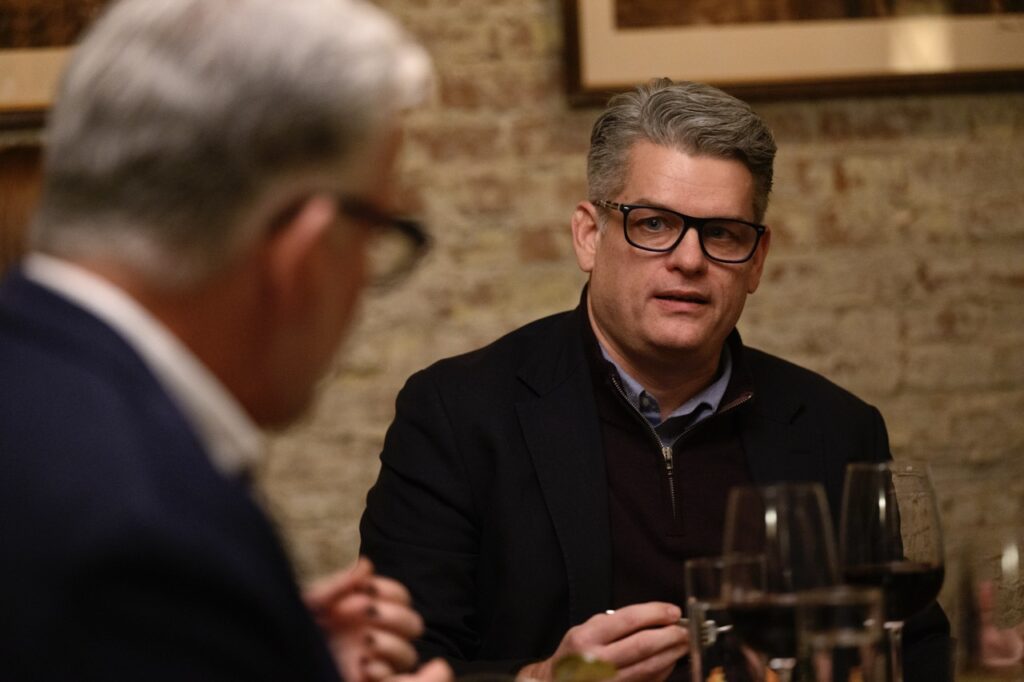
Jeremy Waldrup, President and CEO, Pittsburgh Downtown Partnership.
A Lot in a Little City
Julian Vallozzi, host of the evening, said, “There’s so much that the city offers if you open your eyes to look at it.” As someone raised in Pittsburgh, whose family roots then brought him back, he’s lived downtown for 13 years. He’s wowed by all the nearby offerings sometimes overlooked, from the Science Center to The Point. Lauren Connelly, Director of Economic Development, chimed in saying, “I loved downtown as a kid, a young professional and now as a parent.”
President and CEO of the Pittsburgh Symphony Orchestra Melia Tourangeau points to the entire Cultural District as thriving — with the Symphony’s 2024 holiday programming having its best season on record. “I think Pittsburgh has all of the great things that New York has to offer, and none of the bad,” she said. “It’s such a huge privilege to be here.”
Vallozzi talked about the positive domino effect such theater and cultural happenings have on businesses like theirs, as well as neighboring athletic events from Steelers to Penguins games.
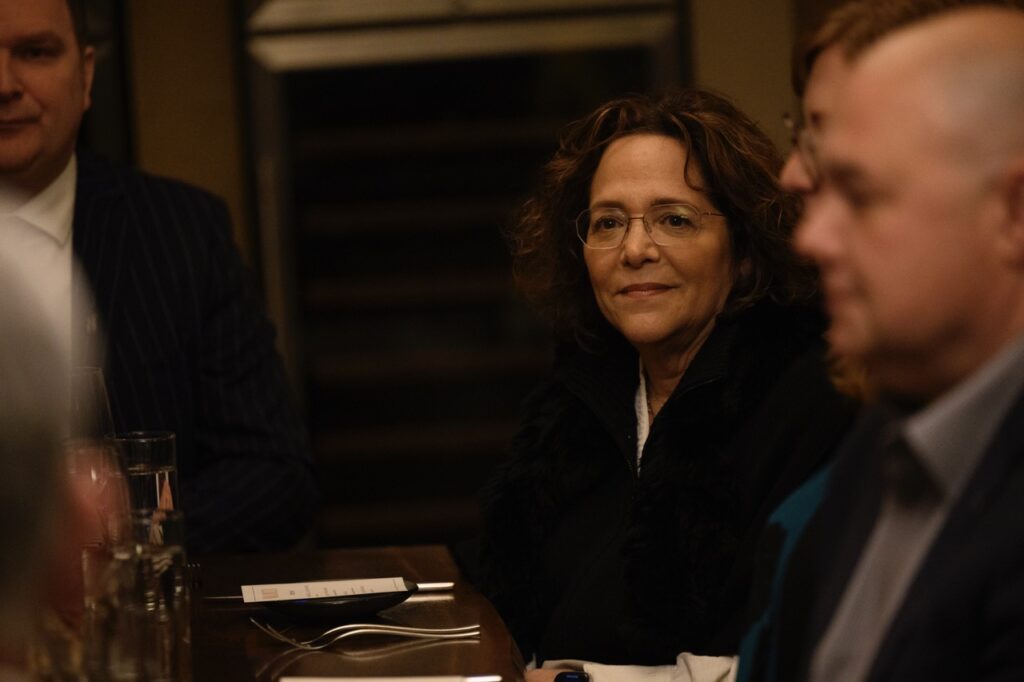
Lisa Slesinger, Larrimor’s
The Power of Tradition
Innamorato pointed out that Pittsburghers love tradition and dislike change. “We need to maintain the through line of continuing these traditions (like Light Up Night and Arts Fest) that people remember as kids.”
On the human services and safety side, there’s encouraging evidence of progress. Jeremy Waldrup, President and CEO of the Pittsburgh Downtown Partnership (PDP), said, “The coordination of human services and public safety has never been better (at least I can speak to 13 years). The amount of conversing that’s happening on an almost daily basis – and action as a result of that.”
Lee Schmidt, Director of Public Safety, grew up in the suburbs of Pittsburgh and loves the downtown, too, which he deems key to so much greatness. He also values his team’s partnership with Jeremy and the PDP, and sees the need for folks living in neighborhoods outside of downtown and the city proper to care about what’s happening, too. “We don’t treat ourselves as a metropolitan region here,” he said. “But if the city fails, the metropolitan region is going to fail, too.”
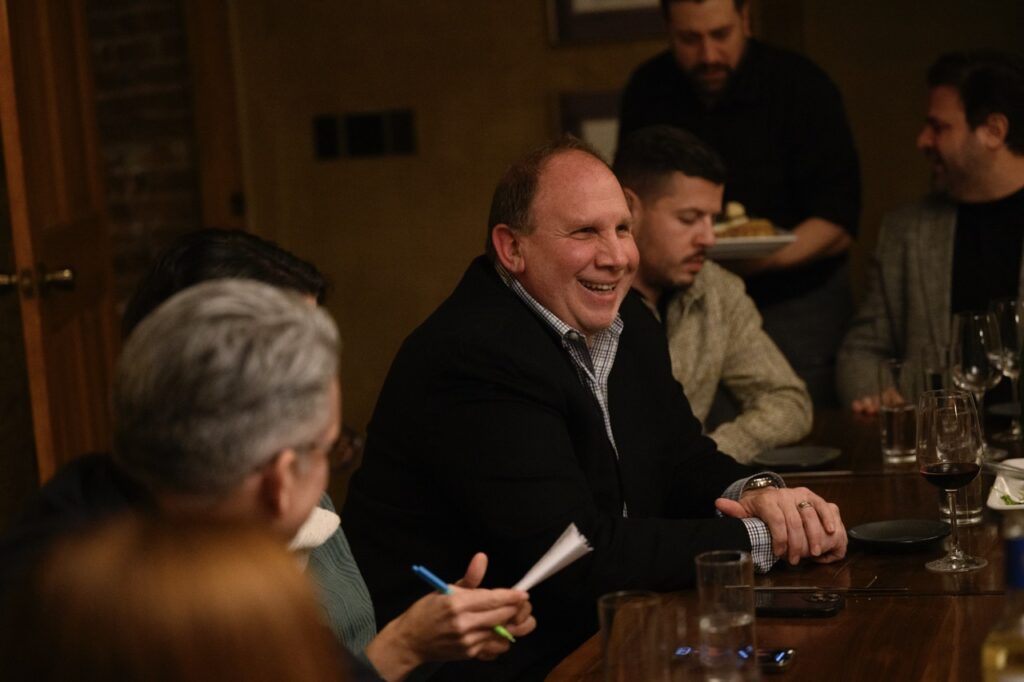
Realtor, restauranteur, and Pittsburgh booster Herky Pollock.
Safety on the Streets
This year the OCHS (Office of Community Health and Safety) team grew from 12 to over 60, which houses their Co-Response social workers, ROOTS (Reaching Out On The Streets) homeless outreach teams, LEAD (Law Enforcement Assisted Diversion), POST (Post Overdose Support Team) and PINS (Persons In Need of Support) high utilizer programs. “These teams work alongside our other public safety bureaus to address quality-of-life issues, which in turn reduces the revolving door of folks in the criminal justice system,” Schmidt said. “This team has significantly grown to expand these programs throughout the entire city.”
Innamorato spoke about the efficacy of programs like the “500 in 500” plan, launched in Allegheny County last June to help 500 people experiencing homelessness find affordable housing within 500 days. The Department of Human Services’ tracking of tents for the unhoused has been as low as they’ve seen it since tracking began, dropping from a high of 143 to a low of 21 over the past year. This winter also brought new shelters and tripled the number of beds (from 200 to 600). “I will continue to double down on human services,” Innamorato said, “because it’s working.”
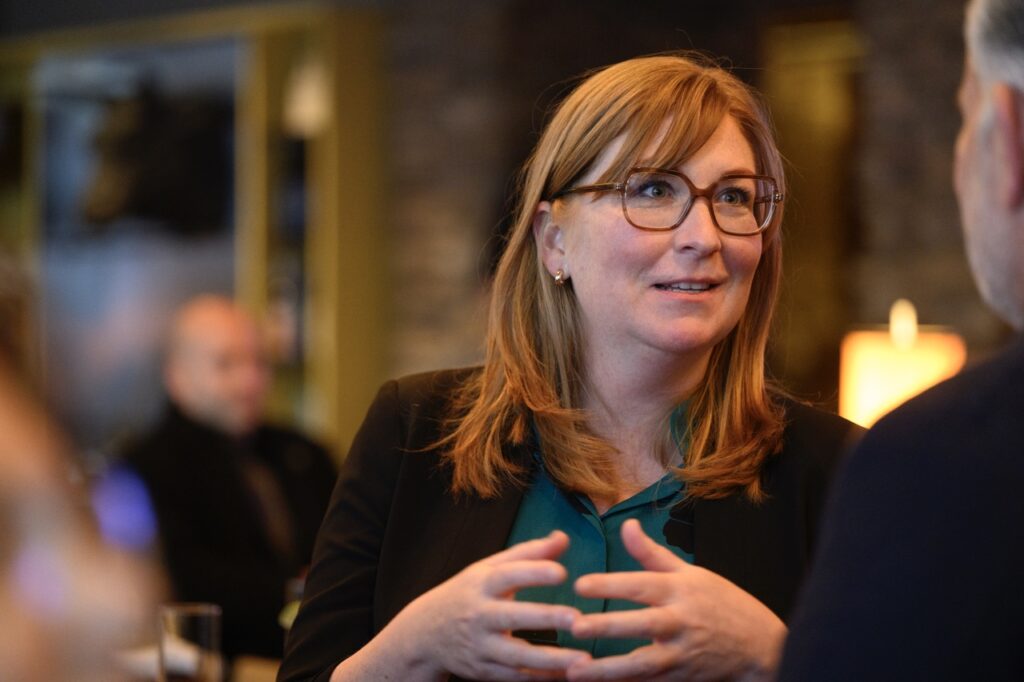
Allegheny County Director of Economic Development Lauren Connelly.
Visions of an 18-Hour City
Much conversation arose around making downtown inviting to folks at all hours. This is increasingly relevant as more workers return to the office.
Lifelong Pittsburgher Innamorato thinks we have to change the narrative for people coming downtown, focusing on telling the great stories of wonderful events, businesses opening, all the excitement stirring. “We’ve all been working on this vision of turning it into a vibrant, 18-hour neighborhood — and making a space for everyone at all hours of the day, for all ages. It’s an exciting time.” (She admits to being an eternal optimist, joking that it’s a job requirement when in government, after all.)
Several roundtable guests truly walk the walk by working, living and playing downtown. Then-Acting Police Chief Chris Ragland grew up on the Northside but has lived downtown since 2008 in an old warehouse-turned-residence. Pollock also loves having a downtown address (since 2022), where he sees people jogging, strolling with dogs, hanging out in parks. “For the first time, we’ve coalesced a downtown district into a neighborhood,” he said.

TABLE Magazine Publisher Justin Matase.
Bringing Back the Popularity of Downtown Pittsburgh
Waldrup says it’s been an honor to see downtown evolve and grow. Recently, there has been a fundamental shift. While 140,000 people used to be downtown every day, the numbers are now between 85,000 and 95,000. But those numbers are rising once again as folks head back into the office and utilize downtown for other purposes. “It’s slow to steer that ship in another direction,” he said, “but it’s happening.”
Lisa Slesinger loves being part of the city and keeping things fresh for shoppers at Larrimor’s — the downtown retail institution her grandfather opened in 1939. It’s great to have so many people back downtown, she says, referring to the PNC building being bustling again once. ”Seeing these indicators of vibrancy is terrific. We are in the business of making people feel welcome, and we’re happy to be here.” Over the years, they’ve collaborated with local organizations from the Warhol to Audubon Society, and have helped with local fundraising efforts, too. (She says their small business’s role in the community is to make people feel good; they can help folks who’ve ripped a seam or popped a button free of charge.)
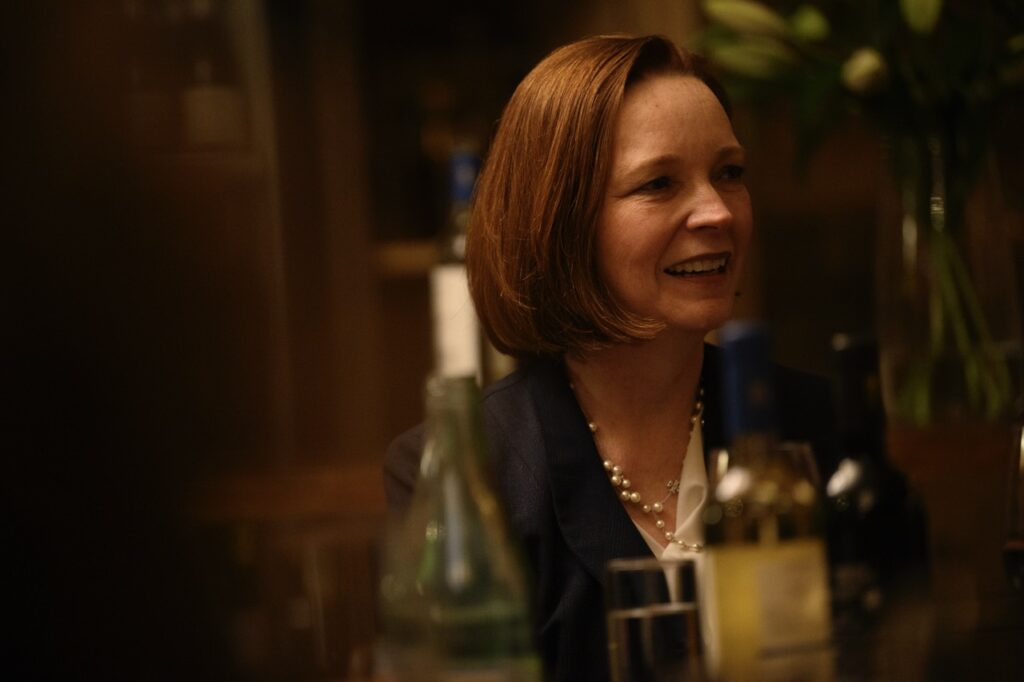
Melia Tourangeau, CEO, Pittsburgh Symphony Orchestra
A Work In Progress
The conversation also turned toward outstanding needs, like the lack of a downtown grocery store and insufficient parking options. Downtown businesses like Larrimor’s still struggle with the latter, and have come up with creative solutions. “These are obstacles to overcome,” Slesinger said. “We offer validated parking so that people know it is easy and not a hassle to come downtown.”
When it comes to downtown office spaces, others agreed that since Pittsburgh was built as a blue-collar town with high-rises, it often cannot meet the needs of those seeking headquarters or campuses (especially in the world of AI, robotics and life sciences). Additionally, Tourangeau asked, “I’m mystified why businesses are going to the Strip since it’s the ‘hip’ place to be; why not make downtown the ‘hip’ place to be?”

TABLE Editor-in-Chief Keith Recker.
Outside of What You See on Your Screen
Many spoke of negative publicity being circulated by certain media outlets and political campaigns. Vallozzi agrees this fearful messaging merely perpetuates a “constant cycle of perception becoming [people’s] reality, whether it’s a reality or not.” Pollock believes there’s a dire need for more prominence in the media to tout all the recent successes and good news — on topics from public safety and housing to tourism and events hosted by the PDP. Certain stats regularly get exacerbated (about crime and the homeless population); in reality, these numbers are nowhere near the scale of other major cities.
The discussion also touched on the needs of making downtown friendlier for families and more residential. Waldrup spoke of this being a broader structural issue of the state. “While we’ve seen downtown residential population growing in the last 10 years, it’s often to the detriment of somewhere else.”
“We need to have more people living here, that’s how you activate a place and create an 18-hour city,” said Connelly. “That’s going to have to be the next wave to getting more people downtown, creating more residential opportunities.”
Tourangeau thinks that with the way the city’s built, It lends itself to vitality. She added, “I don’t know if our community appreciated how special downtown was before the pandemic, or understands how easy it would be to get that back.”
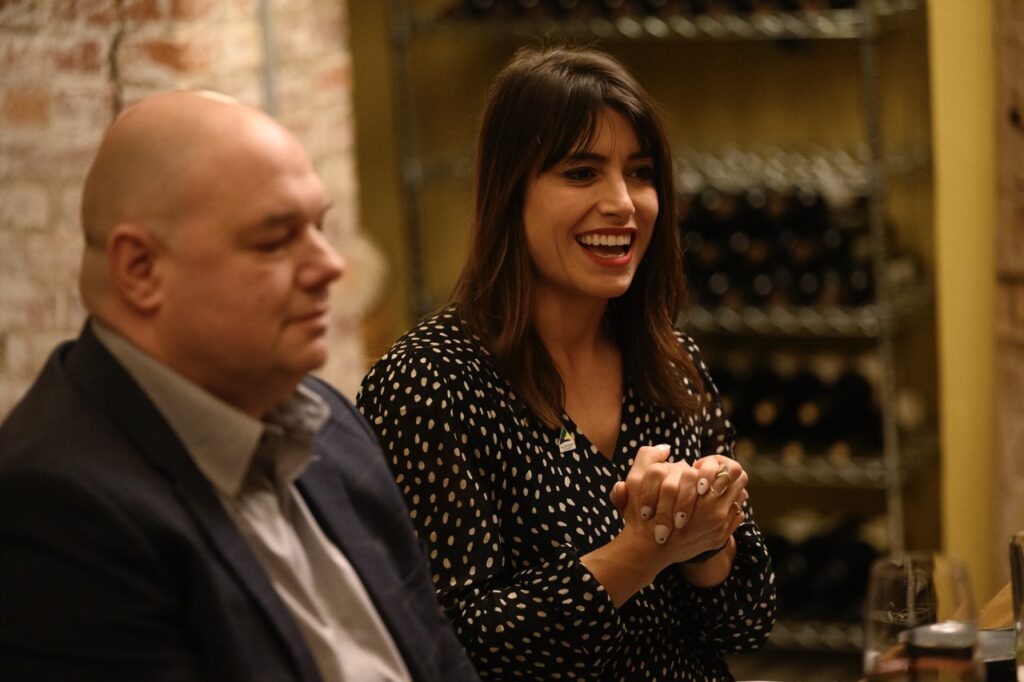
Allegheny County Executive Sara Innamorato.
Rowing in One Direction
Many positive adjustments are already in progress. Pollock promises folks will see “meteoric change” in the next 24 months with all the new development projects, including the three main infrastructure projects at: Mellon Square, The Point and Arts Landing — a new outdoor, $31 million civic space in the Cultural District. Construction will begin for Arts Landing, a key part of the Downtown Revitalization Vision, on 8th Street between Penn Avenue and Fort Duquesne Boulevard in April 2025, with a soft opening projected for April 2026.
Having worked at six other Fairmont locations in North America before coming to Pittsburgh, General Manager Shawn St.-Pierre is impressed by the fact that everyone here seems to be working in the same direction — including government, local organizations, the police, businesses and so on. “Everybody is aligned and saying what we are doing, working together, and to me that’s very impressive.”
Pollock adds that in his 40 years of being involved in downtown, “I’ve never seen everyone rowing in the same direction like we are right now.”
Waldrup already sees a transformation in the conversations being had now versus in 2022 — and in a people-forward strategy focused on results. “It’s never going to be perfect,” he said, “and we’re always going to have work to do.” But there’s a unified commitment to moving forward.
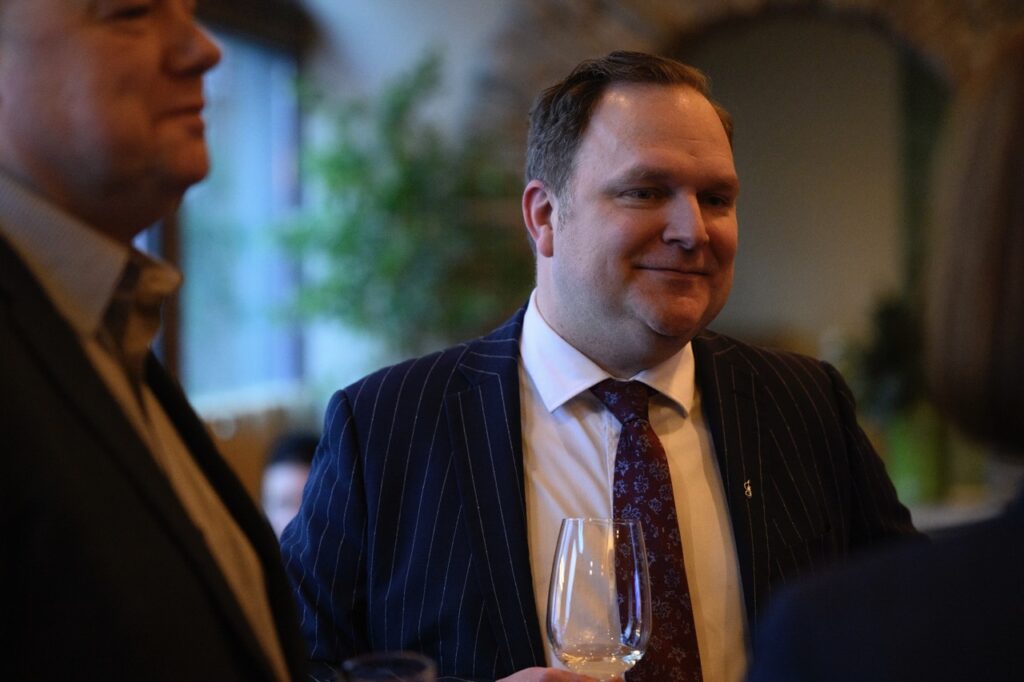
Shawn St.-Pierre, General Manager of The Fairmont.
Looking Ahead 5 Years in Downtown
So where do these folks envision downtown in five years? Many spoke to the need for more residential options. Innamorato sees more strollers, more green spaces, more art in public spaces. Similarly, Waldrup pictures options where any family can come to relax, not only places to spend one’s money.
“I’d like to see a downtown that has a mix of all walks of life,” Ragland said, reminiscing about the “2015 downtown” he loved. “There were any number of mid-range restaurants/bars. The great aspect of that is you sit there — you have a CFO from PPG come in, you have the server from Ruth’s Chris come in, I would be there. You would all just start talking about life.”
It’s Up to Us
Vallozzi believes where we’ll be in five years depends on everyone at the roundtable, and everyone reading this article. “We are a community that’s committed to the city and seeing it go through its next renaissance,” he said, predicting that downtown will look different (thriving in a new capacity), and that’s healthy. “Things should change every 10 years.”
Waldrup gave a directive to those willing to listen. “We want people to realize this is your place, even if they don’t live here or work here,” he said. “It’s theirs. You have to be an active participant; you cannot be a spectator and just read about it. If you want culture here, you have to support it. If you want small businesses here, you have to show up.”
How You Can Support Downtown Pittsburgh
Connelly advised making a day out of downtown outings. “Stay for lunch, walk around, go to Mellon Square, there’s a whole bunch of cool stuff to do,” she said.
Slesinger agreed. “Having a vibrant community is about people who are in town taking advantage of what’s here — to enjoy it and love it.” The evening emanated much hopefulness. “Everyone wants to have downtown survive and thrive,” St.-Pierre said.
Pollock concurred, speaking to the philanthropic nature deeply embedded in the DNA of so many residents and corporations. “It’s not about us,” he said. “It’s about the future generations.”
“Here’s to a table of optimists,” Recker toasted, raising a glass to the room of hopeful changemakers. Indeed, it seems these passionate Pittsburghers won’t stop until their visions are realized — and downtown is thriving to pre-pandemic levels, and beyond.
The Downtown Roundtable Guest List
- Justin Matase – TABLE Publisher
- Keith Recker – TABLE Editor-in-Chief
- Sara Innamorato – County Executive
- Lauren Connelly – Director of Economic Development
- Melia Tourangeau – President and CEO of Pittsburgh Symphony Orchestra
- Lisa Slesinger – Larrimor’s
- Shawn St.-Pierre – Fairmont Hotel
- Herky Pollock – Ritual House
- Julian Vallozzi – Vallozzi’s
- Lee Schmidt – Director of Public Safety
- Chris Ragland – Acting Police Chief
- Jeremy Waldrup – President and CEO of the Pittsburgh Downtown Partnership
- Corinne Whiting – Writer
- Jeff Swensen – Photographer
Story by Corinne Whiting
Photography by Jeff Swensen
Shot on Location at Vallozzi’s
Subscribe to TABLE Magazine’s print edition.
